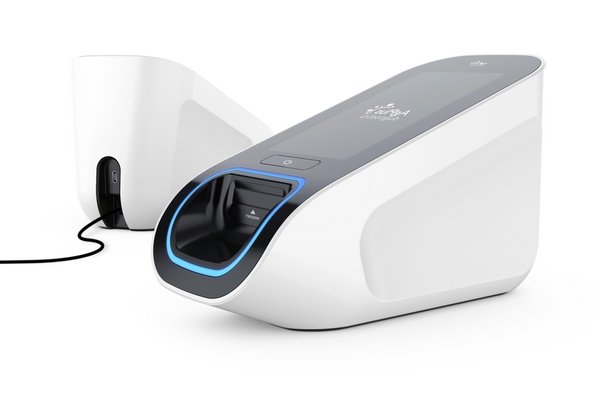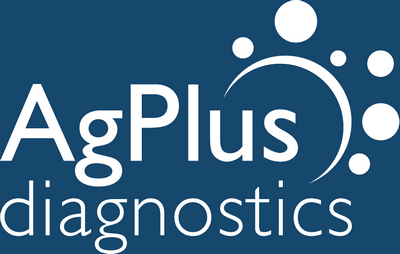There is a need for rapid, accurate quantitative diagnostic tests within the health sector as often many early stage illnesses cannot be identified on the basis of clinical signs and symptoms. A quantitative diagnostic assay can give accurate and exact numeric measure of a unique biomarker in a sample. Whereas qualitative diagnostic test such as a positive or negative can often be misread or result in false positives and are not as accurate as quantitative values. However, the development of quantitative assays is proven to more difficult and can result in many problems during the development stage. The top 5 problems with developing a near patient quantitative diagnostic assay are:
- The biggest problem in developing a near patient diagnostic assay is obtaining sensitivity that compares to laboratory-based testing’s such as enzyme-linked immunosorbent assays, also called ELISA. Laboratory based assays are often quantitative whereas many near patient tests are qualitative such as lateral flow assays, which means decreased sensitivity and a need for visual interpretation which can result in false positives/negatives. To get comparable results to a laboratory-based analyser and as easy to use as a lateral flow test then a quantitative point of care test is the best direction for research and development to improve the healthcare sector. This will result in high sensitivity that can be comparable to quantitative assays but with a huge reduction in time from hours like laboratory-based analyser to minutes.
- Time is an extremely important factor to consider when developing a near patient diagnostic assay. A major requirement with point of care tests is for the assay to be short and a one-step procedure. These requirements are so important because they are used within GPs, hospital and patient homes when quick results is a requirement to allows more time to discuss diagnosis with patients. However, to obtain such short assay times sensitivity, precision and accuracy is often sacrificed due to a shorter incubation time. With many laboratory-based analysers incubation takes place over hours and with multiple steps, so miniaturising this is difficult, even more difficult if a quantitative assay is still required.
- The third top problem when developing a near patient diagnostic assay is size and maintaining portability to allow it to be used on a GPs desk, hospital trolley and patient homes if required. Reducing size can be easy but again it results in a loss of sensitivity and specificity as a balance needs to be maintained between the two to obtain and quantitative portable and robust assay with suitably small reader to interpret the results and diagnose patients easily.
- Sample preparation and flexibility within the use of near patient tests needs to be easily obtainable from the patient and applied straight to the device without any sample preparation required. Such as the need for the removal of red blood cells as this would require more laboratory equipment and no longer mean it is a near patient assay. With a quantitative near patient test it is difficult to develop a system that works with neat samples and removes a matrix interaction and in turn results in non-specificity. Many laboratory based quantitative systems require sample preparation and dilution which removes many possible interferences; however, this results in increased time and cost. To achieve the removal of sample preparation steps extra reagents or materials may be required in the assay which increases costs, development time and manufacturing time. Obtaining the perfect balance between all these requirements is extremely difficult and requires more laboratory research and development.
- Lastly the fifth problem when developing a near patient diagnostic assay is cost. Cost is extremely important as the assay needs to be available worldwide within the healthcare environment at a reasonable price and comparable to alternatives available on the environment. For example, laboratory based ELISAs can perform 96 patient tests on one assay plate, the cost to perform one test needs to be comparable to a single use disposable near patient assay which can test one patient at one time. Therefore, material costs and manufacturing costs needs stay low without compromising assay time, sensitivity, specificity and portability.
 As you can see, there are many challenges with developing a near patient quantitative diagnostic test from obtaining suitable device stability to keeping the cost down in development and manufacture. At AgPlus we have developed a novel quantitative point of care diagnostic solution while overcoming the issues mentioned above. The AgPlus platform consists of an assay test cartridge and our handheld Agilis Reader for delivering rapid, quantitative diagnostic results. Our assays are developed as single use test that simply requires the addition of the sample on to the cartridge. The assay is then inserted into The Agilis Reader for the analyte measurement and analysis to take place. The platform is also universally adaptable across multiple biomarkers and can therefore be used for diagnosis of multiple biomarkers within the health sector.
As you can see, there are many challenges with developing a near patient quantitative diagnostic test from obtaining suitable device stability to keeping the cost down in development and manufacture. At AgPlus we have developed a novel quantitative point of care diagnostic solution while overcoming the issues mentioned above. The AgPlus platform consists of an assay test cartridge and our handheld Agilis Reader for delivering rapid, quantitative diagnostic results. Our assays are developed as single use test that simply requires the addition of the sample on to the cartridge. The assay is then inserted into The Agilis Reader for the analyte measurement and analysis to take place. The platform is also universally adaptable across multiple biomarkers and can therefore be used for diagnosis of multiple biomarkers within the health sector.

